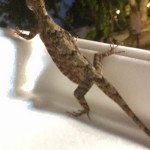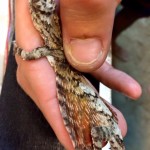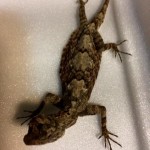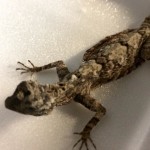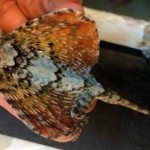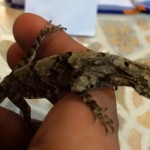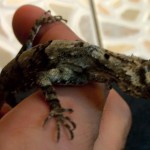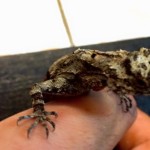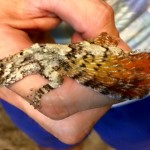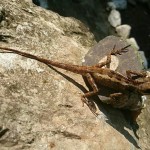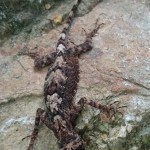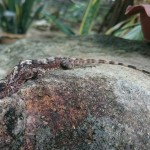Red Palm Weevil (Rhynchophorus ferrugineus)
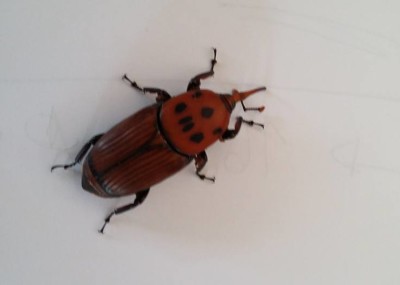
Image Copyright Jean-Pierre Odet
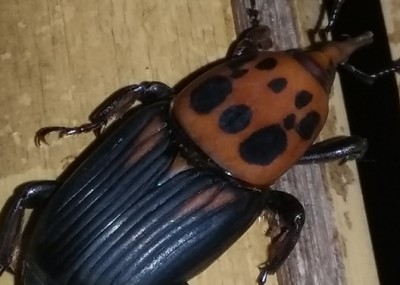
Image Copyright Jean-Pierre Odet
Last Observed: February 2016, Koh Chang
Observed By: Jean-Pierre Odet
The red palm weevil is a long-snouted brown and black beetle that grows up to 5cm in length.
They excavate holes in palm trees that can result in their death and they are considered a major pest in commercial palm plantations.
Red Palm Weevil Wikipedia
Dundubia spiculata
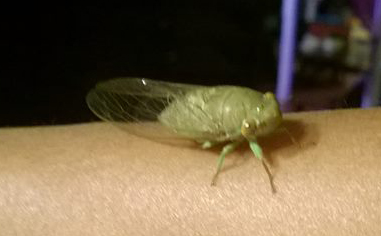
Image Copyright Napha Kotkangplu
Observed: February 2016
Observed By: Napha Kotkangplu
Dundubia spiculata is a species of Cicada found on Koh Chang. If you hear an unholy screeching racket round about sunset it might be this fellow setting up a hullabaloo with his wings.
Spotted Flying Dragon (Draco maculatus)
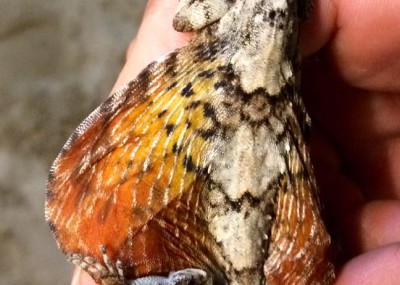
Image Copyright Michael Martin
Last Observed: February 2016 2015
Observed By: Michael Martin, Nikki Barracuda
Now the spotted flying dragon is a splendid little lizard. It doesn’t actually fly of course, but it can glide a hell of a long way from tree to tree. It does this by extending special brilliantly coloured “wings” which are flaps of skin that it makes rigid when gliding and tucks away when on the ground.
Spotted Flying Dragon Wikipedia
Image Copyright Michael Martin
Image Copyright Michael Martin
Image Copyright Michael Martin
Image Copyright Michael Martin
Image Copyright Michael Martin
Image Copyright Michael Martin
Image Copyright Michael Martin
Image Copyright Michael Martin
Image Copyright Michael Martin
Image Copyright Nikki Barracuda
Image Copyright Nikki Barracuda
Image Copyright Nikki Barracuda
Sugarcane Longhorn Stemborer (Dorysthenes buqueti)
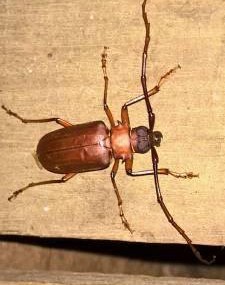
Image Copyright Nina Baum
Observed: February 2016
Observed By: Nina Baum
This species of longhorn beetle is considered to be a pest since its larvae dig into both sugarcane and bamboo leading to the death of plant.
It is a native insect of Southeast Asia.
Sugarcane Longhorn Stemborer Wikipedia
Diving Beetle (Dytiscidae)
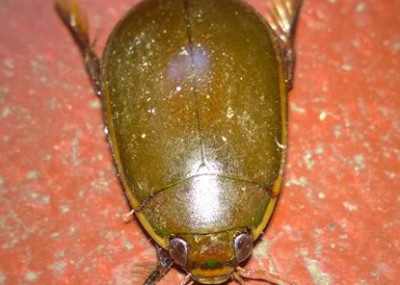
Image Copyright Napha Kotkangplu
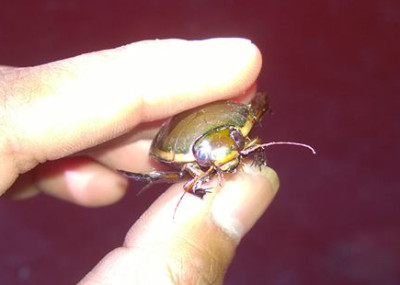
Image Copyright Napha Kotkangplu
Observed: February 2016
Observed By: Napha Kotkangplu
The diving beetles are a family of round-bodied beetles that grow to a maximum length of 4.5 centimetres.
There are loads of species of them and this… is one of them. If you’re a beetle expert feel free to let us know which one. The problem is that there are 4,000 species of diving beetle and they all seem to be small round and brown.
Life is short people so let’s just leave it at that for now shall we?
Diving Beetle Wikipedia
Crimson Sunbird (Aethopyga siparaja)
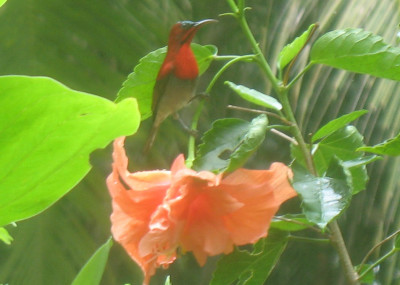
Image: Dave Hinchliffe
Last Observed: January 2009 – Koh Chang
Last Observed By: Dave Hinchliffe
The Crimson Sunbird is a member of the nectar-feeding sunbird family of birds. These tiny birds occupy a similar evolutionary niche to the better-known hummingbirds of the Americas. The look similar and have very fast-beating wings that allow them to hover and use their long bills to feed on nectar.
The adult crimson sunbird only grows up to 11cm in length and has a brilliant red colouration of head, breast and back..
Crimson Sunbird Wikipedia
Asian Palm Civet (Paradoxorus hermaphroditus)
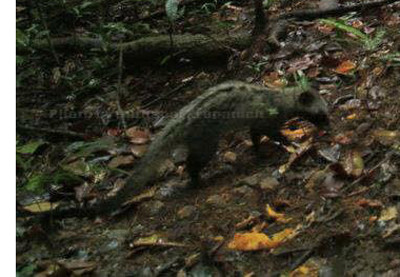
Image Copyright Suthanai Krupanich
Last Observed: Koh Chang, December 2015
Observed By: Suthanai Krupanich
The Asian palm civet is a relatively common nocturnal mammal native to Koh Chang and Southeast Asia. It inhabits a wide range of habitats and lives both in trees and on the ground so is ideally suited to koh Chang’s jungle.
Kopi Luwak
You won’t believe this. Kopi Luwak (known as Chamot in Thai) is a type of coffee prized apparently for it’s great flavour. It is made from coffee beans that have passed through the digestive system of the Asian Palm Civet. Kopi luwak is presumably Indonesian for mammal-crap coffee. You would think that pre-eaten coffee would not be a thing, but you’d be wrong. This stuff costs a fortune. And of course this has created an illegal trade in captured Asian palm civets being force-fed coffee. Good grief. Tea is nice. drink tea.
Asian Palm Civet Wikipedia
Common Earl
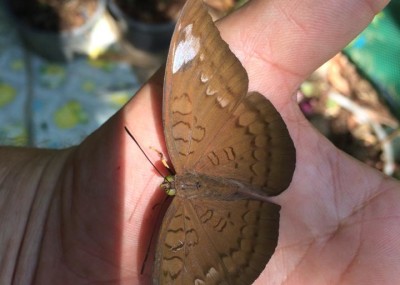
Image Copyright Hans Henrik Hansen
Last Observed: February 2016
Observed By: Hans Henrik Hansen
Butterflies get some strange names. Naming one the Common Earl suggests that there should be a rare earl or something out there that is altogether more exotic.
The Common Earl is a species of nymphalid butterfly native, even common, to South and Southeast Asia.
Common Earl Wikipedia
Clethyrogna Turbata
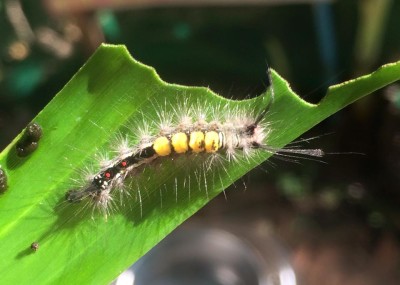
Image Copyright Hans Henrik Hansen
Observed: Koh Chang, December 2015
Observed By: สุธนัย ครุพานิช
The adult form of this moth species is a comparatively drab reddish brown colour but the caterpillar, as you can see, more than makes up for this by being a furry explosion of red, yellow and black.
Clethyrogna Turbata Project Noah
Chinese Pond Heron (Ardeola bacchus)
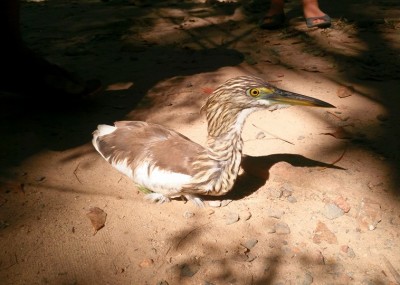
Image Copyright Paweena Khamsap
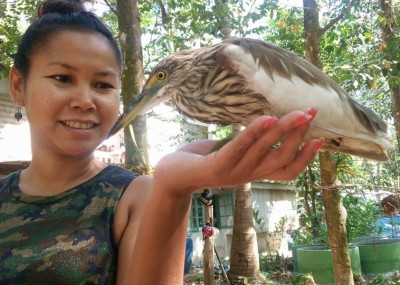
Image Copyright Paweena Khamsap
Last Observed: January 2016 – Koh Chang
Last Observed By: Paweena Khamsap
The Chinese Pond Heron is a medium sized freshwaterwater bird native to East Asia.
It has a regular plumage of white and brown feathers but it dresses up for breeding season by developing a striking red white and blue colouration.
they feed on fish, insects and crustaceans and are a relatively plentiful species.
Chinese Pond Heron Wikipedia





